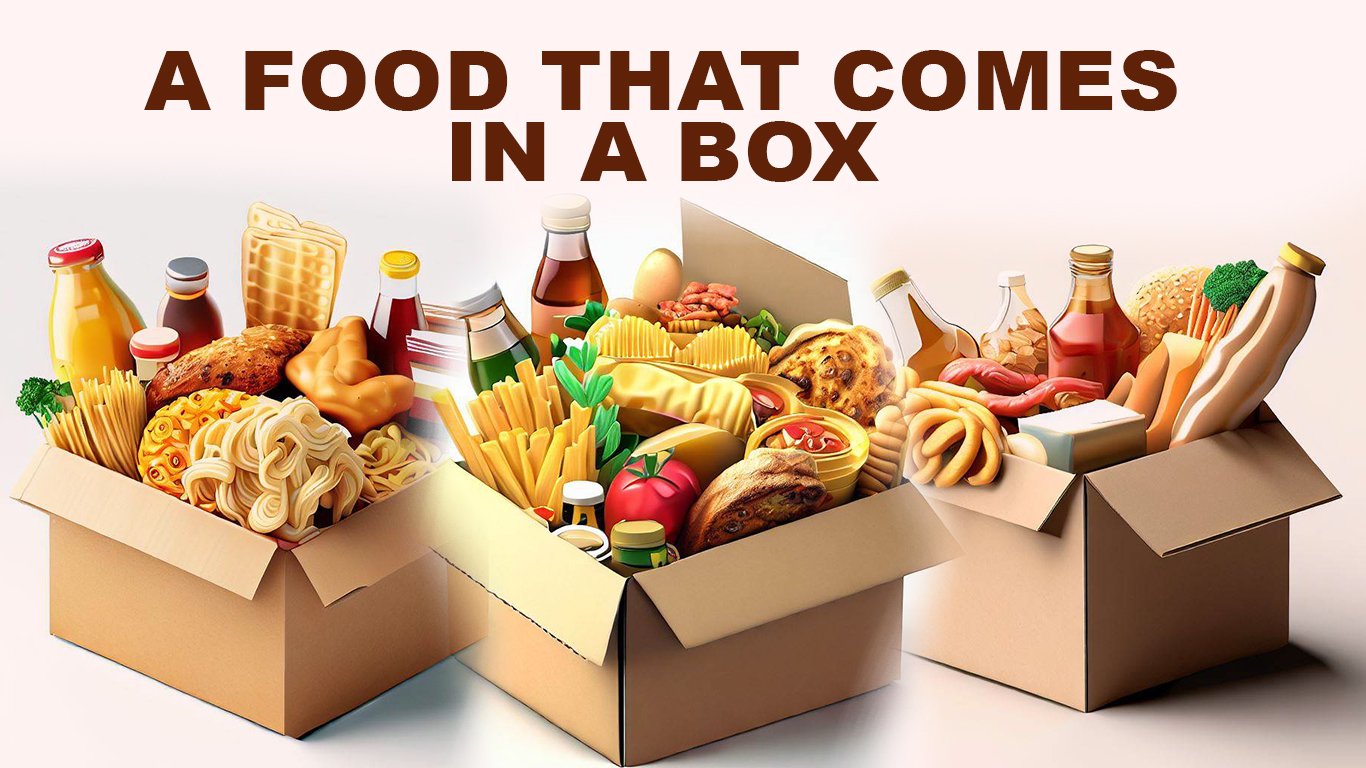Boxed foods are a popular choice for consumers due to their convenience and affordability. In this article, we will explore the different types of boxed foods, a food that comes in a box, their nutritional value, preparation and cooking methods, and environmental impact.
Definition of Boxed Foods
Boxed foods refer to any type of packaged food that is sold in a box, whether it is a cereal box, pasta box, or frozen meal box.
Brief History of Boxed Foods
Boxed foods have been a popular choice for consumers for decades due to their convenience and affordability. The first boxed foods were introduced in the early 20th century and included cereals and baking mixes.
Purpose of the Article
The purpose of this article is to provide a comprehensive guide to boxed foods, including their types, nutritional value, preparation and cooking methods, and environmental impact.
II. Types of Boxed Foods
Boxed foods come in a variety of types, including cereals, pasta, rice, snacks, frozen meals, baking mixes, soups and broths, canned foods, meal kits, baby foods, and pet foods.
Cereals
Cereals are a popular breakfast option and come in a variety of flavors and types, including whole grain, high fiber, and low sugar options.
Pasta and Rice
Pasta and rice are staple ingredients for many meals and come in a variety of shapes and sizes, including spaghetti, penne, and brown rice.
Snacks
Snacks such as crackers and chips are often packaged in boxes and come in a variety of flavors and types, including gluten-free and organic options.
Frozen Meals
Frozen meals are a convenient option for busy individuals and come in a variety of types, including entrees, pizzas, and breakfast sandwiches.
Baking Mixes
Baking mixes are used to make cakes, cookies, and other baked goods and come in a variety of flavors and types, including gluten-free and organic options.
Soups and Broths
Soups and broths are a common ingredient in many recipes and come in a variety of flavors and types, including low-sodium and organic options.
Canned Foods
Canned foods come in a variety of types, including fruits, vegetables, and meats, and have a longer shelf life than other boxed foods.
Meal Kits
Meal kits provide all the ingredients needed for a meal and come in a variety of types, including vegetarian and family-friendly options.
Baby Foods
Baby foods come in a variety of types, including purees and snacks, and are available in organic and natural options.
Pet Foods
Pet foods come in a variety of types, including dry and wet food, and are available in organic and natural options.
III. Pros and Cons of Boxed Foods
Boxed foods offer several advantages, such as convenience, cost-effectiveness, and long shelf life. However, boxed foods may also have disadvantages, such as lower nutritional content and the use of additives and preservatives. The environmental impact of boxed foods is also a concern, as the packaging materials can contribute to waste and pollution.
Advantages of Boxed Foods
- Convenience: Boxed foods are easy to store and prepare, making them a popular choice for busy individuals.
- Cost-effectiveness: Boxed foods are often less expensive than fresh foods, making them a budget-friendly option.
- Long shelf life: Boxed foods have a longer shelf life than fresh foods, reducing food waste.
Disadvantages of Boxed Foods
- Nutritional content: Boxed foods may be lower in nutrients than fresh foods, especially if they are high in sugar, sodium, and unhealthy fats.
- Additives and preservatives: Boxed foods may contain additives and preservatives to enhance flavor and prolong shelf life.
- Environmental impact: The packaging materials used for boxed foods can contribute to waste and pollution.
IV. Nutritional Value of Boxed Foods
The nutritional value of a food that comes in a box varies depending on the type of food and the brand. Some boxed foods, such as cereals and frozen meals, may be high in sugar, sodium, and unhealthy fats. However, there are also healthier options available, such as whole grain cereals, low-sodium soups, and organic baby foods.
Overview of Nutritional Content
Boxed foods may be lower in nutrients than fresh foods, but there are healthier options available.
Comparison to Fresh Foods
Fresh foods are generally higher in nutrients than boxed foods, but boxed foods have a longer shelf life and are more convenient.
Tips for Choosing Healthier Options as a food that comes in a box
Choose boxed foods that are high in nutrients and low in unhealthy ingredients. Read nutrition labels and choose whole grain options.
Reading Nutrition Labels
Nutrition labels provide information on the nutrient content of boxed foods and can help consumers make informed choices.
V. Brands and Products
There are many brands and products available in the boxed food category, ranging from well-known brands to niche and specialty products. Popular brands include General Mills, Kellogg’s, and Nestle, while organic and natural options are available from brands such as Annie’s and Nature’s Path.
Overview of Popular Brands
Popular brands include General Mills, Kellogg’s, and Nestle.
Comparison of Product Offerings
Product offerings vary by brand and include a variety of types and flavors.
Consumer Reviews and Ratings
Consumer reviews and ratings can be helpful in choosing the best products for your needs.
Organic and Natural Options
Organic and natural options are available from brands such as Annie’s and Nature’s Path.
VI. Preparation and Cooking
Boxed foods are generally easy to prepare and require minimal cooking skills. Instructions for preparing boxed foods are usually included on the packaging. A food that comes in a box, such as baking mixes, may require additional ingredients and preparation steps.
Instructions for Preparing Boxed Foods
Instructions for preparing boxed foods are usually included on the packaging.
Tips for Enhancing Flavor and Nutrition
To enhance the flavor and nutritional value of boxed foods, consider adding fresh ingredients such as fruits and vegetables.
Comparison to Homemade Meals and a food that comes in a box
Boxed foods can be used as a base for homemade meals and can be a time-saving option for busy individuals.
Meal Planning and Batch Cooking
Meal planning and batch cooking can help consumers save time and money when using boxed foods.
VII. Storage and Shelf Life a food that comes in a box
Boxed foods that is a food that comes in a box should be stored in a cool, dry place to ensure maximum shelf life. The shelf life of boxed foods varies depending on the type of food and the packaging. Some boxed foods, such as canned foods, have a longer shelf life than others.
Best Practices for Storing Boxed Foods
Boxed foods should be stored in a cool, dry place to ensure maximum shelf life.
Shelf Life of Different Types of Boxed Foods
The shelf life of boxed foods varies depending on the type of food and the packaging.
Signs of Spoilage and Food Safety
Signs of spoilage, such as mold or off odors, should be checked before consuming boxed foods.
VIII. Sustainability and Recycling a food that comes in a box
The packaging materials used for boxed foods can contribute to waste and pollution. However, there are ways to reduce the environmental impact of boxed foods.
Environmental Impact of a food that comes in a box
The packaging materials used for boxed foods can contribute to waste and pollution.
Packaging Materials and Waste
The packaging materials used for boxed foods can be recycled or upcycled to reduce waste.
Recycling and Upcycling Ideas
Recycling and upcycling ideas include using boxes for crafts and storage.
Choosing Eco-Friendly Packaging Materials for a food that comes in a box
Choosing boxed foods with eco-friendly packaging materials, such as recycled paper or biodegradable plastics, is also an option.
IX. Conclusion of a food that comes in a box
A food that comes in a box offer convenience and affordability for busy individuals, but they may also have disadvantages such as lower nutritional value and environmental impact. By choosing healthier options and reducing waste, consumers can enjoy the benefits of boxed foods while minimizing their impact on the environment.








